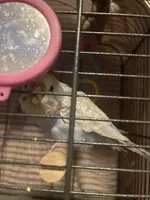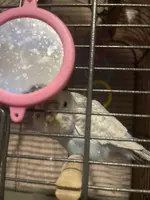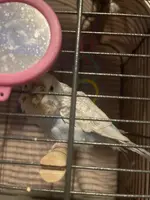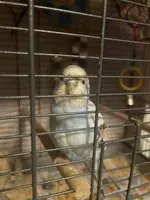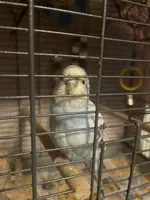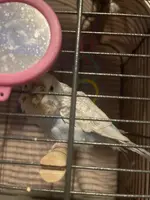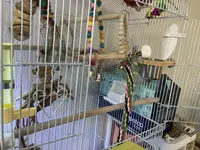How old is she? Has she had any dietary changes recently? Is she active? Is she eating and drinking normally? Preening herself?
Lethargy, and tail bobbing are two signs of medical emergency. In other words, sitting on the bottom of the cage, or shortness of breath.
I have a great book that I need to pull out of storage ASAP and I’ll refresh my memory about beak health when I do so, hopefully later today.
My intuition is this. Beak health is a good indicator of overall health. Are you feeding a variety of high quality foods? Does she have a mineral block, and a cuttlebone always? (I prefer an unflavored mineral block if you can find one. Who knows what they’re adding for color and flavor but I can almost guarantee it’s not found unadulterated in nature.)
Does she have perches, and other wood to use to maintain her beak and claws? Recently I discovered the Ole bird Kabob- my keets devoured it!
It’s controversial now, but used to be standard to offer mineral grit at the bottom of the cage. I use Higgins- with oyster shells in the ingredient list- and my three go for it occasionally. I keep it in a separate are food dish. I’ve recently added Kaytee molting and conditioning to it. My budgies do not seem to care for Kaytee mineral grit, and I am wary of it because it is a larger grain size. Maybe crushing it more with a mortar and pestle would help.
Can’t vouch for it yet, but I’ve also added a vitamin and mineral supplement to a 2 oz water silo. This is in addition to normal fresh water (for however long it stays ‘fresh’ lol).
Then there’s sunlight and vitamin D production that comes along naturally with sunlight exposure. You can supplement natural light with a ‘happy lamp’ designed for people who need additional full spectrum light during short winter days. A perch, or an Ole Kabob, hung near a sunny window might help too.
Of course, you know your birdie best, and these are only my ideas. An avian vet would be a priceless resource. I’m just a hobbyist.
Best to your birdie buddy and to you too!
Laura

